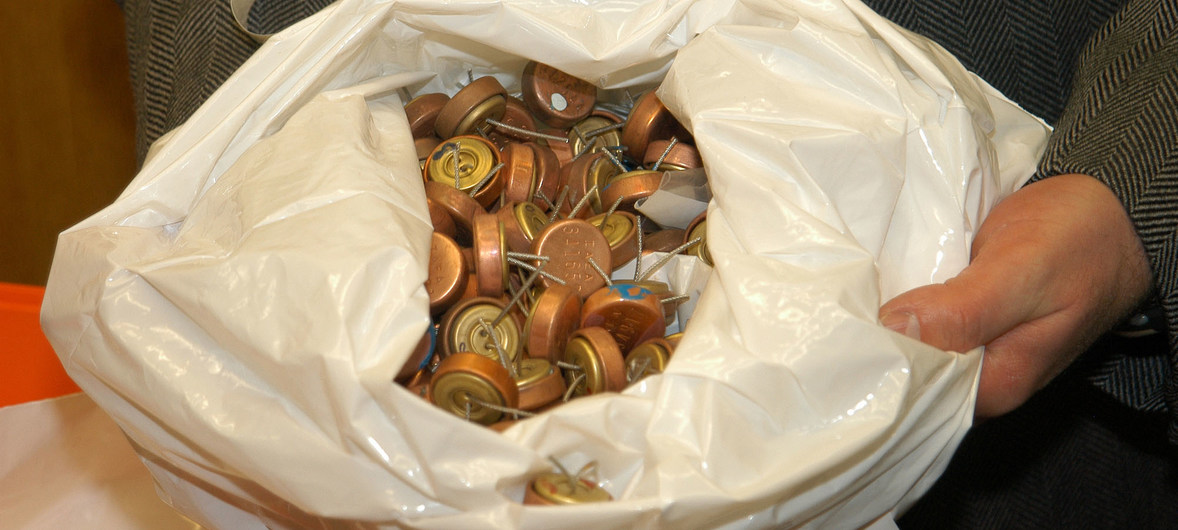
4 March 2019
Peace and Security
IAEA Director General Yukiya Amano said that the agency was continuing to monitor activities around North Korea’s Yongbyon Nuclear Scientific Research Centre, which according to news reports is believed to have supplied plutonium for DPRK’s nuclear weapons programme, and was a central issue in talks that broke up without agreement last week in Vietnam, between United States President, Donald Trump, and North Korea’s Kim Jong Un.
Mr. Amano said the agency “has not observed any indications” of being in operation since early December, including any reprocessing activities at the Radiochemical Laboratory or construction in or around the light water reactor.
He added that the IAEA continued, however, to observe “indications of the ongoing use of the reported centrifuge enrichment facility.” Without access, “the Agency cannot confirm the nature and purpose of these activities,” he said.
For the past decade, the agency has been largely monitoring DPRK’s nuclear activities through satellite imagery. “I again call upon the DPRK to comply fully with its obligations under relevant resolutions of the UN Security Council and of the IAEA Board, to cooperate promptly with the Agency and to resolve all outstanding issues,” Mr. Amano stressed.
North Korea carried out six nuclear tests between 2006 and 2017, and in the wake of diplomatic efforts led by the US and South Korea to denuclearize the Korean Peninsula, and the lull in rocket launches, Mr. Amano has said the agency stands ready to undertake any nuclear verification activities, as requested.
Iran continuing to implement commitments under nuclear deal
Turning to Iran, the IAEA chief referred the Board to his verification and monitoring report considering Security Council Resolution 2231, which covers the Agency’s activities over the last few months.
“The Agency continues to verify the non-diversion of nuclear material declared by Iran under its Safeguards Agreement,” he said, adding that its evaluations on the absence of undeclared nuclear material and activities also continues.
The 2015 nuclear deal formally known as the Joint Comprehensive Plan of Action, or JCPOA – reached by Iran, China, France, Germany, Russia, the United Kingdom, the US and the European Union – sets out rigorous mechanisms for monitoring restrictions placed on Iran’s nuclear programme, while paving the way for the lifting of UN sanctions against the country.
On the overarching topic itself, Mr. Amano said that the 2019 Nuclear Safety Review presents priorities for this year and beyond.
“It indicates how we plan to further strengthen our work in nuclear, radiation, transport and waste safety, and emergency preparedness and response”, he flagged.
The IAEA chief also announced that the third IAEA International Conference on Nuclear Security would be held at ministerial level in at its headquarters in Vienna, Austria, from 10 to 14 February 2020.
2020 IAEA international nuclear security conference will:
• Raise awareness to strengthen nuclear security.
• Review the current status of nuclear security efforts and highlight areas that may need more focus.
• Promote IAEA nuclear security guidance and other international guidelines.
• Encourage information-sharing and good practices while protecting sensitive information.
• Reaffirm IAEA’s central role in strengthening the nuclear security framework and coordinating international activities while avoiding duplication and overlap.
• Highlight IAEA nuclear security programmes.
Photo:Safeguards inspectors use metal seals to tag safeguarded equipment, at nuclear facilities. Those in the photograph were broken.
